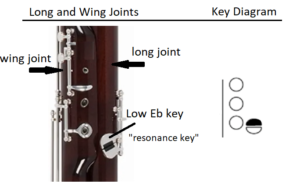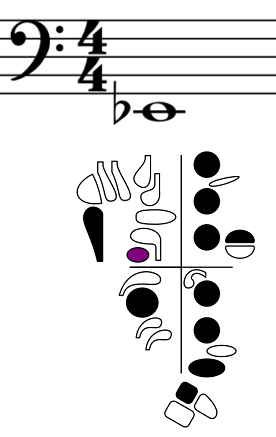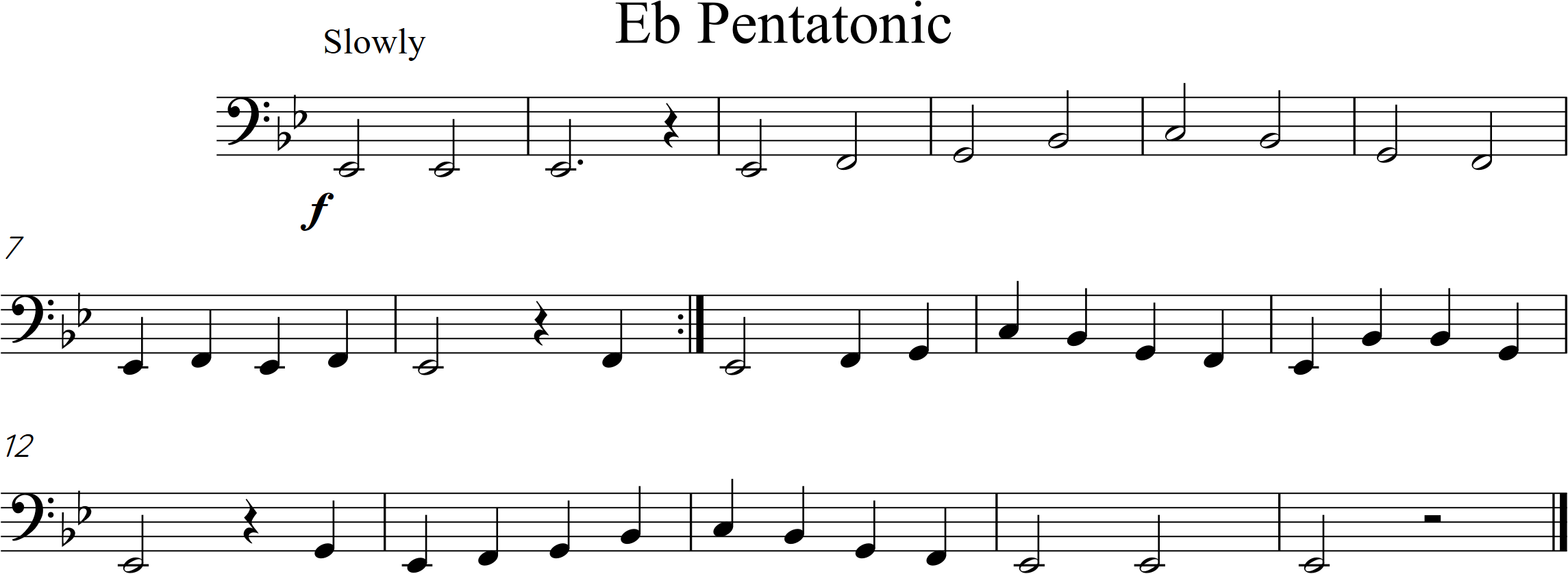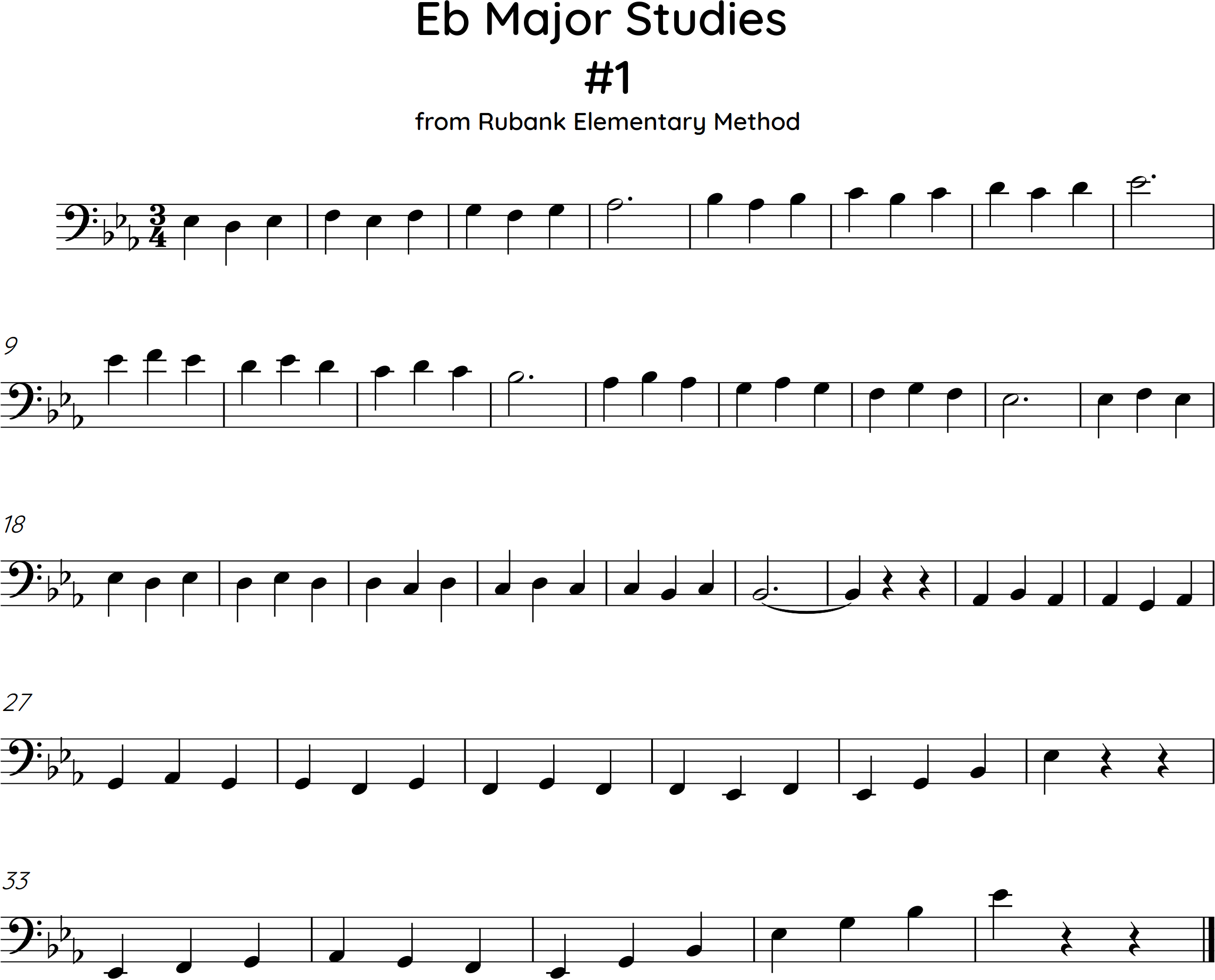The Low Eb key
You already know the low E-flat key as the resonance key which is located on the front of the long joint and is operated by the left pinky. It is the upper of one of two keys in that location.

Fingering

Reminder: The whisper key is optional on this note because the Low E/pancake key also moves the whisper-key pad to close the hole on the bocal nub. If leaving the whisper key down simplifies the technique just leave it down. If it makes the passage harder don’t use the whisper key for notes below F.
Tips:
Don’t confuse the low E/pancake key (played by your right thumb) with the low Eb/resonance key (played by your left pinky)!
The only difference between low D and low Eb is the addition of the left pinky on the low Eb/resonance key. You’ve used this key with the top-space G to help round the tone and lower the pitch. This time it will create a different pitch when it is pressed.
Pressing the low E-flat key WILL NOT create an Eb in any other register of the bassoon. It only works below the staff, hence the name Low Eb key.
Intonation
Low E-flat is not as sharp as low D but you will still need to follow the same suggestions made in the previous chapter.
- Warm, slow but steady air
- “Hot pizza mouth”
- Well soaked reed
- All tone holes completely covered.
- Low voicing (“hot”)

Eb Pentatonic
The pentatonic scale is based on the major scale, but only certain notes are used. The pentatonic scale is used in all types of music around the world.




Feedback/Errata